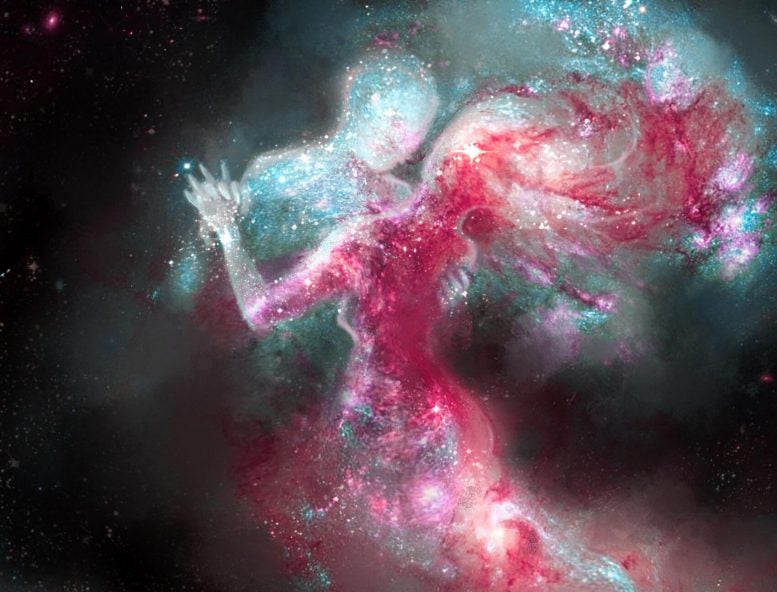
Tiny quantum fluctuations in the early universe explain two major mysteries about the large-scale structure of the universe, in a cosmic tango of the very small and the very large. A new study by researchers at Penn State used the theory of quantum loop gravity to account for these mysteries, which Einstein’s theory of general relativity considers anomalous. Credit: Dani Zemba, Penn State
Theory of loop quantum cosmology describes how tiny primordial features account for anomalies at the largest scales of the universe.
While Einstein’s theory of general relativity can explain a large array of fascinating astrophysical and cosmological phenomena, some aspects of the properties of the universe at the largest scales remain a mystery. A new study using loop quantum cosmology—a theory that uses quantum mechanics to extend gravitational physics beyond Einstein’s theory of general relativity—accounts for two major mysteries. While the differences in the theories occur at the tiniest of scales—much smaller than even a proton—they have consequences at the largest of accessible scales in the universe. The study, which was published online on July 29, 2020, in the journal Physical Review Letters, also provides new predictions about the universe that future satellite missions could test.
While a zoomed-out picture of the universe looks fairly uniform, it does have a large-scale structure, for example, because galaxies and dark matter are not uniformly distributed throughout the universe. The origin of this structure has been traced back to the tiny inhomogeneities observed in the Cosmic Microwave Background (CMB)—radiation that was emitted when the universe was 380 thousand years young that we can still see today. But the CMB itself has three puzzling features that are considered anomalies because they are difficult to explain using known physics.
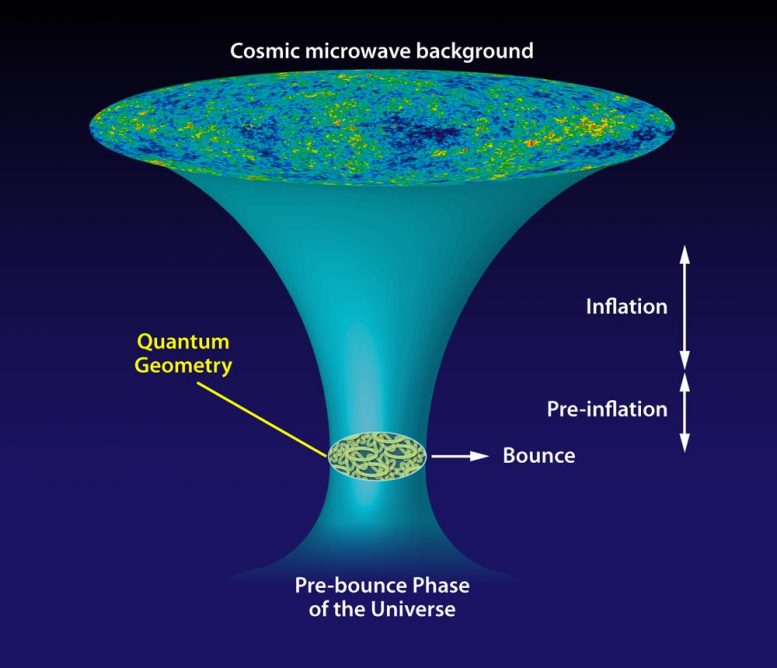
Diagram showing the evolution of the Universe according to the paradigm of Loop Quantum Origins, developed by scientists at Penn State. Credit: Alan Stonebraker. P. Singh, Physics 5, 142 (2012); APS/A. Stonebraker
“While seeing one of these anomalies may not be that statistically remarkable, seeing two or more together suggests we live in an exceptional universe,” said Donghui Jeong, associate professor of astronomy and astrophysics at Penn State and an author of the paper. “A recent study in the journal Nature Astronomy proposed an explanation for one of these anomalies that raised so many additional concerns, they flagged a ‘possible crisis in cosmology.’ Using quantum loop cosmology, however, we have resolved two of these anomalies naturally, avoiding that potential crisis.”
Research over the last three decades has greatly improved our understanding of the early universe, including how the inhomogeneities in the CMB were produced in the first place. These inhomogeneities are a result of inevitable quantum fluctuations in the early universe. During a highly accelerated phase of expansion at very early times—known as inflation—these primordial, miniscule fluctuations were stretched under gravity’s influence and seeded the observed inhomogeneities in the CMB.
“To understand how primordial seeds arose, we need a closer look at the early universe, where Einstein’s theory of general relativity breaks down,” said Abhay Ashtekar, Evan Pugh Professor of Physics, holder of the Eberly Family Chair in Physics, and director of the Penn State Institute for Gravitation and the Cosmos. “The standard inflationary paradigm based on general relativity treats space time as a smooth continuum. Consider a shirt that appears like a two-dimensional surface, but on closer inspection you can see that it is woven by densely packed one-dimensional threads. In this way, the fabric of space time is really woven by quantum threads. In accounting for these threads, loop quantum cosmology allows us to go beyond the continuum described by general relativity where Einstein’s physics breaks down—for example beyond the Big Bang.”
The researchers’ previous investigation into the early universe replaced the idea of a Big Bang singularity, where the universe emerged from nothing, with the Big Bounce, where the current expanding universe emerged from a super-compressed mass that was created when the universe contracted in its preceding phase. They found that all of the large-scale structures of the universe accounted for by general relativity are equally explained by inflation after this Big Bounce using equations of loop quantum cosmology.
In the new study, the researchers determined that inflation under loop quantum cosmology also resolves two of the major anomalies that appear under general relativity.
“The primordial fluctuations we are talking about occur at the incredibly small Planck scale,” said Brajesh Gupt, a postdoctoral researcher at Penn State at the time of the research and currently at the Texas Advanced Computing Center of the University of Texas at Austin. “A Planck length is about 20 orders of magnitude smaller than the radius of a proton. But corrections to inflation at this unimaginably small scale simultaneously explain two of the anomalies at the largest scales in the universe, in a cosmic tango of the very small and the very large.”
The researchers also produced new predictions about a fundamental cosmological parameter and primordial gravitational waves that could be tested during future satellite missions, including LiteBird and Cosmic Origins Explorer, which will continue to improve our understanding of the early universe.
Reference: “Alleviating the Tension in the Cosmic Microwave Background Using Planck-Scale Physics” by Abhay Ashtekar, Brajesh Gupt, Donghui Jeong and V. Sreenath, 29 July 2020, Physical Review Letters.
DOI: 10.1103/PhysRevLett.125.051302
In addition to Jeong, Ashtekar, and Gupt, the research team includes V. Sreenath at the National Institute of Technology Karnataka in Surathkal, India. This work was supported by the National Science Foundation, NASA, the Penn State Eberly College of Science, and the Inter-University Center for Astronomy and Astrophysics in Pune, India.



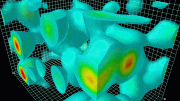
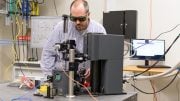

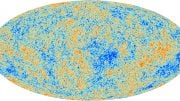
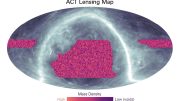
… so how we know that something happened before?
It is simple, you have t1, t2, … tn and if n is greater than it is later. However, somebody else could have different t count.
But, what rally happens when you are at the speed of light or close to it, like an electron.
It kind of looks confusing, … could that be reason to strange quantum effects electrons and some other particles experience. Not, that cleat, after all.
Cosmology is consistent with general relativity, so there is no principle problem.
What can set up more or less simultaneous clocks in such a system – see the age of the local universe, say – is a common phase transition across some volume combined with later expansion.
For our universe it was a local end of inflation that started the rough “ticking”.
A Big Bounce view of the universe is possible but has its own troubles. Another view, from concepts in String Theory, describes how inflation started and stopped, where the matter and energy came from in the first place, and how everything will continue with a different kind of bounce.
Surely you didn’t think all of the matter and energy we see now was stuffed in a single Big Bang! As you may know, quantum mechanics proposes a roiling quantum foam energy field everywhere in the universe, and the right kind of energy spikes creates string/anti-string pairs. These pairs immediately annihilate each other, but I suggest a process similar to Hawking radiation that form permanent strings that are the basis of all the matter and energy we have. This is a Big Bang/Big Crunch cycle, over and over. Interestingly, this same process can be used to form the galaxies we see. Gravity is far too weak to cause anything to combine rather than flying apart from the enormous force of the Big Bang. Specifics for the physical creation of the universe and the galaxies are shown in my YouTube https://www.youtube.com/watch?v=cQUMq2Z11Jc&t=3s
Self promotion of pseudoscience which cannot pass peer review.
And string theory did not show up at “natural” energies above the Higgs energy in LHC, nor do electron sphericity leave room for it there according to ACME. And so it can be considered failed.
There are some who don’t like String Theory and claim it’s pseudoscience, but the way it explains fundamental problems in physics is so clear that it remains a major research area. In this case, how the universe could have been created, what specifically is wrong with this explanation? Your remarks have nothing to do with it.
I think we have corresponded on this before. I did support string theory – and had to clarify many times that it isn’t pseudoscience since it was widely peer review published – after being interested in cosmology since it was the large hope of the field.
But observational evidence trumps hope. String theory isn’t pseudoscience, it is just wrong.
Whatever you try to push onto others is both pseudoscience (not peer review published, self promotion) and wrong (more precisely utterly unlikely to be correct). And you mentioned string theory. That is how my comment cut to the core of what you said, and ironically why your responding comment has nothing to do with my previous one.
This work admits that their more complicated hypothesis (a varying “ekpyrotic” field versus a scalar inflation field) isn’t consistent with observations.
The “bouncing universe” is an old idea, and has never stood up to observation.
And none of the ideas presented in this article are based on scientific experimentation. It’s the same ole same ole, trying to substantiate questionable theories (because new observations are continually calling them into question) with new theories. The only real takeaway in this article is that more and more they’re realizing there’s a “possible crisis in cosmology.” Take away possible, and they’ve nailed it.
There is no real crisis, though the current tension between (mostly) low-z measurements of expansion and (mostly) high-z, integrative ones makes people hope there is. (Hope since there would immediately be new physics to research.)
But all the integrative observations concur with the standard cosmology, and measurement problems haven’t been eliminated as the simplest explanation yet.
They do look at the current measurements, see the paper, that is how they know their model isn’t competitive (doesn’t explain the measurements). It is a “hopeful” toy model that they want to put out there. Not really something to write home about.
When you read article after article after article about how researchers are continually being surprised, shocked, etc by new discoveries because they don’t line up standard cosmology assumptions about the universe, not sure what else you’d call it besides crisis. Seems like ALL their models are pretty much “hopeful” toy models.
And PS, Halton Arp has decimated the notion of red shift (though that’s ignored by all in standard cosmology), which leaves expansion dead in the water, well, cosmos.
What are the three anomalies?
That would hopefully be listed in the work. Mind that the model comes from theoretical physics math, not cosmology physics, so the authors have their list but the cosmology field may have another.
An anomaly would be a robust set of observations that doesn’t fit the overall theory.
1. This paper list the tension between integrative data and low-z (nearby object) data – implicitly the expansion rate – as an “anomaly”, but it isn’t considered such as it isn’t established and it has no one value even. Moreover, that is the one suggestion they skip in their own analysis.
2. The large scale power anomaly in the CMB spatial spectra. In simple terms, it refer to the largest scale 1 or 2 peaks who deviate from the expected value.
3. They list the lensing amplitude, i..e. the (mostly) dark matter weak lensing effect that is larger than 1, which can suggest that space is positively curved instead of flat.
None of 2. and 3. are considered robust anomalies, or even proper (> 3 sigma) tensions.
From the conclusion of Planck 2018 Cosmological parameters:
“The overall picture from Planck, since our first results were presented in PCP13, is one of remarkable consistency with the 6-parameter ΛCDM cosmology. This consistency is strengthened with the addition of the polarization spectra presented in this paper. Nevertheless, there are a number of curious “tensions,” both internal to the Planck data (the tendency for Planck to favour AL > 1, discussed in Sect. 6.2, is an example) and with some external data sets. Some of these tensions may reflect small systematic errors in the Planck data (though we have not found any evidence for errors that could significantly change our results) and/or systematic errors in external data. However, none of these, with the exception of the discrepancy with direct measurements of H0, is significant at more than the 2–3σ level. Such relatively modest discrepancies generate interest, in part, because of the high precision of the Planck data set. We could, therefore, disregard these tensions and conclude that the 6-parameter ΛCDM model provides an astonishingly accurate description of the Universe from times prior to 380 000 years after the Big Bang, defining the last-scattering surface observed via the CMB, to the present day at an age of 13.8 billion years.”
[“Planck 2018 results. VI. Cosmological parameters”, https://www.aanda.org/component/article?access=doi&doi=10.1051/0004-6361/201833910 .]
From the body of the BOSS 2020 Cosmological implications, which is based on the most complete galaxy survey integrated with other results and hugely improved on Planck 2018:
“The WL [Weak Lensing] measurements, when combined with the CMB data, substantially shift the constraints on curvature to be consistent with flatness (Ωk = −0.0004 ± 0.0048), with a factor of 3.4 reduction in uncertainty.”
[“THE COMPLETED SDSS-IV EXTENDED BARYON OSCILLATION SPECTROSCOPIC SURVEY:
COSMOLOGICAL IMPLICATIONS FROM TWO DECADES OF SPECTROSCOPIC SURVEYS AT THE
APACHE POINT OBSERVATORY”, https://arxiv.org/pdf/2007.08991.pdf ].
Does this loop quantum cosmology integral part of loop quantum gravity, what are major advance researches going on in the particular field, does string theory helpful to solve the mistry of universe?
Can’t decide what bored me more, the artical or the comments. I’m calling it a draw.